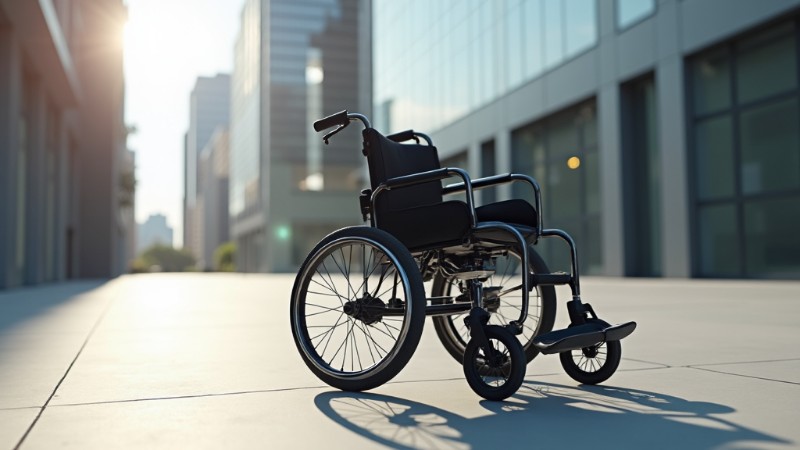The robotic nurse assistant market is expanding rapidly, driven by an aging global population, increasing healthcare demands, and advancements in robotic technology. In 2023, the market was worth USD 1.27 billion and is expected to grow to USD 4.55 billion by 2032, with a compound annual growth rate (CAGR) of 15.27%.
As hospitals and healthcare facilities face staff shortages and rising operational costs, automation is becoming a key solution for improving patient care and efficiency. Countries worldwide are recognizing the role of robotics in addressing these challenges, with North America leading in adoption and Asia-Pacific emerging as the fastest-growing region.
Key Takeaways
The market for robotic nurse assistants is rapidly growing due to an aging population, increasing healthcare demands, and technological breakthroughs.
- The global robotic nurse assistant market is projected to grow from $1.27 billion in 2023 to $4.55 billion by 2032 with a CAGR of 15.27%.
- North America leads in adoption, while the Asia-Pacific region is the fastest growing due to strong government support and ongoing technological advancements.
- Despite benefits such as cost efficiency and enhanced patient care, challenges like high initial costs and complex regulatory issues are hindering broader implementation.
Rising demand for robotic solutions in healthcare
The global robotics industry is witnessing significant growth, with over 4.2 million robots in operation, marking a 10% annual increase. In 2023 alone, 541,000 new robots were installed worldwide, with China accounting for 51% of these deployments.
The healthcare sector, particularly nursing and eldercare, is a major beneficiary of this trend as hospitals integrate robotic nurse assistants to streamline workflows and reduce workforce strain.
Robots for elder care: Meeting aging needs
With life expectancy increasing, there is a growing demand for robots for elder care to support aging individuals with mobility, daily tasks, and companionship. Countries like Japan and China are leading in the development of assistive robots to help elderly individuals maintain independence.
Toyota’s Human Support Robot (HSR) and SoftBank’s Pepper are examples of robots designed to assist with household tasks, medication reminders, and social engagement. These advancements help address caregiver shortages while ensuring improved quality of life for seniors.
Technological innovations driving market expansion
Advancements in robotics, AI, and machine learning are improving the capabilities of robotic nurse assistants, making them more reliable and efficient. The development of robotic exoskeletons by companies like Cyberdyne and Ekso Bionics is helping elderly and disabled patients regain mobility.
Additionally, humanoid healthcare assistants like Miroki and Miroka are designed to enhance patient interactions and improve hospital workflows. The Horizon Surgical robotic platform is also revolutionizing surgical precision, further integrating robotics into healthcare.
Market dynamics: Drivers and restraints
Several factors are driving the growth of the robotic nurse assistant market, while certain challenges are slowing its expansion.
Increasing adoption due to cost efficiency
With healthcare costs rising, automation provides a cost-effective solution for hospitals. Robotic nurse assistants reduce labor costs, enhance operational efficiency, and improve resource allocation.
Financial constraints highlight the necessity for cost-saving technologies. The success of AI-driven automation, such as Roots Automation’s digital coworkers, demonstrates the potential of robotic solutions in boosting productivity and return on investment.
Challenges in integration and high initial costs
Despite their benefits, robotic nurse assistants face significant challenges, including high initial investment costs, complex programming requirements, and human-robot collaboration concerns. Smaller healthcare institutions often struggle with budget limitations, making it difficult to implement robotic solutions. Regulatory complexities and resistance from healthcare workers fearing job displacement further slow adoption.
To facilitate broader adoption, stakeholders are focusing on reducing costs, improving human-robot collaboration, and streamlining regulatory compliance. Companies like Diligent Robotics are securing funding to expand their hospital assistant robot, Moxi, in various healthcare facilities. Government support in Asia-Pacific, particularly in China and Japan, is also driving market growth, making robotic nurse assistants more accessible to healthcare providers.
Regional market trends and key developments
North America leads in robotic nurse assistant adoption: In 2023, North America accounted for 55% of the global market, reflecting the region’s strong commitment to healthcare automation. The U.S. is a leader in robotic-assisted healthcare, with companies like Diligent Robotics and Intuitive Surgical spearheading innovation.
The da Vinci SP Surgical System, launched in 2024, represents the next phase of robotic-assisted surgeries, improving precision and patient outcomes. Additionally, government initiatives and funding programs continue to support the adoption of robotic healthcare solutions.
Asia-Pacific emerges as the fastest-growing market: The Asia-Pacific region is witnessing rapid growth, driven by advancements in China, Japan, and India. China is investing heavily in robotic eldercare, while Japan focuses on assistive robotic technology to address demographic challenges.
India is rapidly automating its healthcare sector, with hospitals adopting robotic nurse assistants to improve efficiency. Government initiatives supporting healthcare infrastructure development further contribute to the region’s growing market share.
Future outlook and industry developments
The market for robotic nurse assistants is anticipated to see ongoing progress, incorporating AI-driven features, improved patient engagement, and increased flexibility in hospital environments.
The rise of multifunctional robots, such as Toyota’s Human Support Robot (HSR), showcases the potential of automation in improving patient care and optimizing healthcare operations. With 20% of healthcare providers planning to adopt robotic solutions by 2025, the industry is set for significant expansion, reshaping healthcare delivery worldwide.
As robotic technologies evolve, their role in reducing healthcare burdens, enhancing patient care, and improving operational efficiency will make them an indispensable part of modern healthcare systems.















